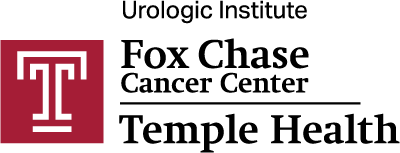

Sarcoidosis-Associated Pulmonary Hypertension (SAPH): How a Patient Went from Transplant Evaluation to Living an Active Life
Clinical History
Bernard is a 37-year-old man with sarcoidosis initially diagnosed by lung biopsy in 2009. The sarcoidosis affects his skin, lungs, lymph nodes, and liver. He was referred to the Temple Lung Center for a lung transplantation evaluation due to severe pulmonary hypertension and poor exercise capacity. He had severe dyspnea, chronic dry cough, and chest tightness, as well as palpitation and dizziness. His constitutional symptoms included weight loss and fatigue.
Temple Diagnostic Findings (May 2017)
- ACE level high at 313, creatinine in 1.2–1.3 range and abnormal liver tests (combined transaminitis and obstructive pattern) on blood work
- Mild restriction and moderately reduced DLCO (TLC 4.65/74%, DLCO 51%) • Micronodules and lymphadenopathy on HRCT • Moderately dilated and hypokinetic right ventricle, elevated mean right atrial pressure (RAP) and estimated RVSP of 35 on echocardiogram
- Mean PA pressure 64, wedge 7, cardiac index 1.48, PVR 20 on right heart catheterization (RHC)
- Acute hepatitis with multiple noncaseating granulomas on liver biopsy
Diagnosis
Bernard was diagnosed with severe sarcoidosis-associated pulmonary hypertension (SAPH) as well as active inflammation from sarcoidosis.
Therapy
Bernard began comprehensive sarcoidosis and SAPH management, with a goal to reverse the disease processes and improve quality of life, in lieu of a lung transplantation:
- Vasodilator therapy for SAPH: Remodulin
- Immunosuppressive therapy for active inflammation: Prednisone and Azathioprine
Outcomes
- Dyspnea completely resolved, allowing patient to resume exercising and rejoin work
- Skin lesions completely resolved, other cardiorespiratory and constitutional symptoms almost completely resolved
- Labs normalized and repeat RHC showed marked improvement (mean PA pressure 38, wedge 6, cardiac index 2.5 and PVR 6.8) six months after initiation of therapy
- Immunosuppressive therapy reduced to low dose for maintenance and Remodulin continued
Key Points
- Management of pulmonary sarcoidosis should involve a comprehensive evaluation to categorize patients based on their underlying pathologic process(es), which can co-exist with the inherent variable and multisystem nature of sarcoidosis.
- Comprehensive management of advanced pulmonary sarcoidosis can potentially reverse pathology and improve patient quality of life without the need for lung transplantation. Evaluation includes assessment of inflammation (in lungs and other organs) as well as signs of advanced disease, including respiratory failure, pulmonary hypertension (SAPH), and fibrosis.
- Immunosuppressive therapy in sarcoidosis is still not fully evidence-based; but, in expert hands, and after a detailed discussion with the patient, it can help improve the quality of life.
- Management of advanced pulmonary sarcoidosis requires a multidisciplinary approach carried out in centers with in-depth experience in sarcoidosis, SAPH, and transplantation. The Temple Lung Center’s Sarcoidosis Program is one of few in the world with this level of expertise.
Lead Physicians

Rohit Gupta, MD
Assistant Professor, Thoracic Medicine and Surgery, Lewis Katz School of Medicine at Temple University
Director, Sarcoidosis Program, Temple University Hospital

Parth M. Rali, MD, FCCP
Associate Professor, Thoracic Medicine and Surgery, Lewis Katz School of Medicine at Temple University
Director of Fellowship Wellness and Social Media, Pulmonary and Critical Care Fellowship, Temple University Hospital
Director, Pulmonary Embolism Response Team (PERT) Program, Temple University Hospital
Chair, Temple University Hospital Anticoagulation Stewardship Committee

